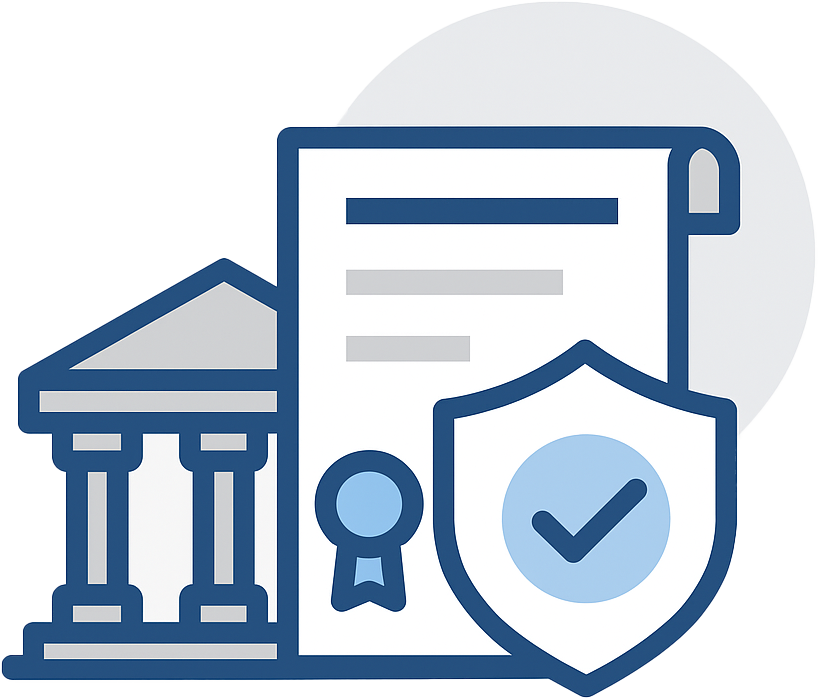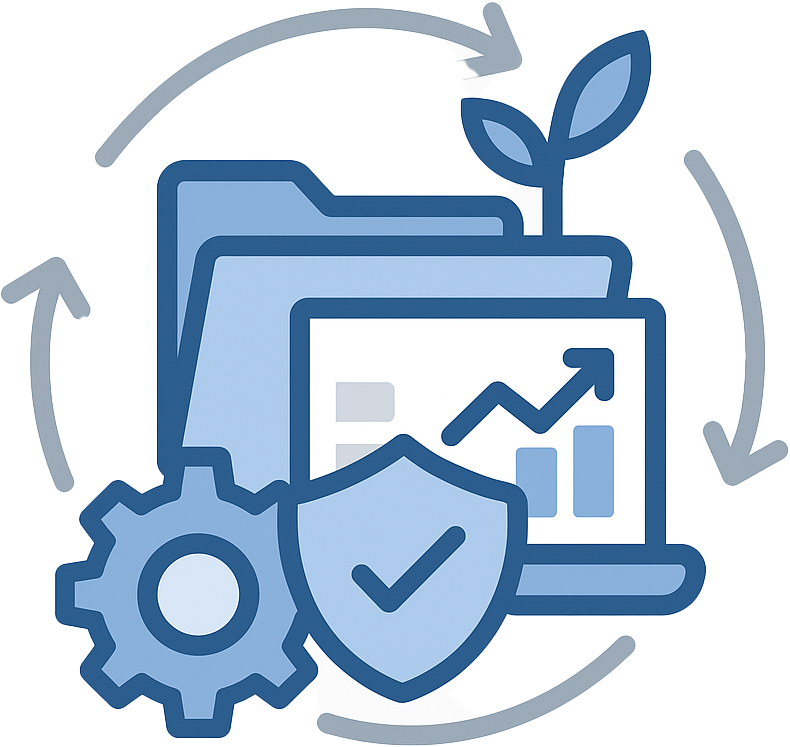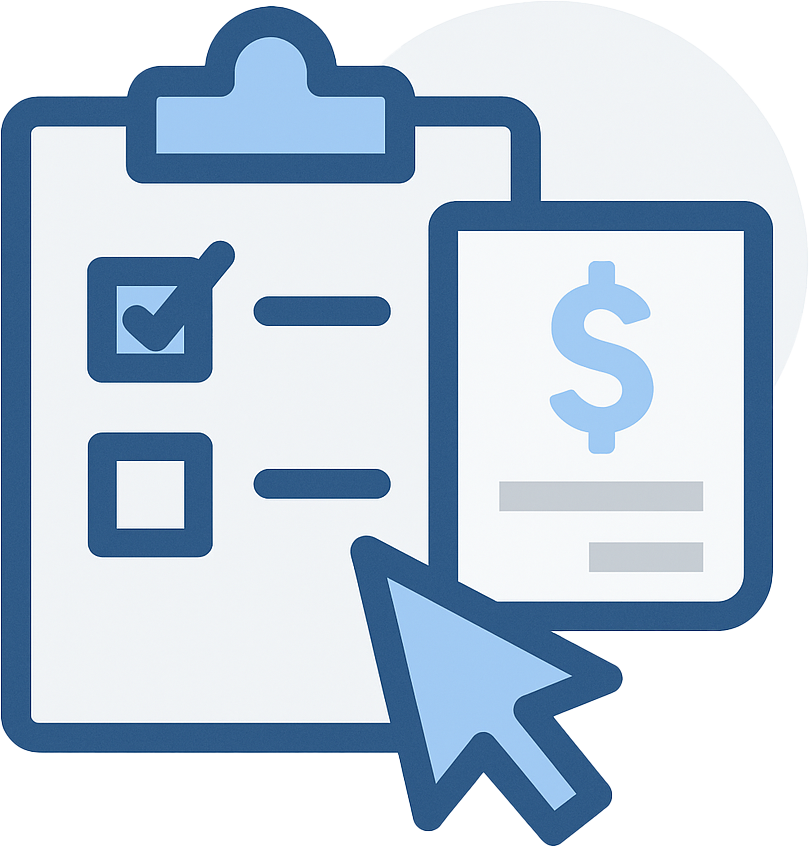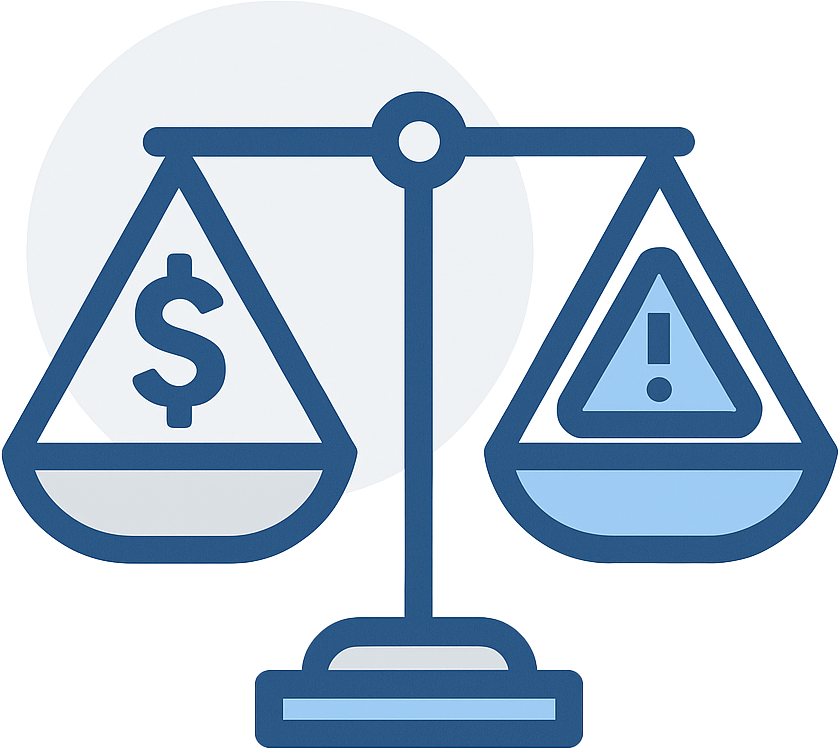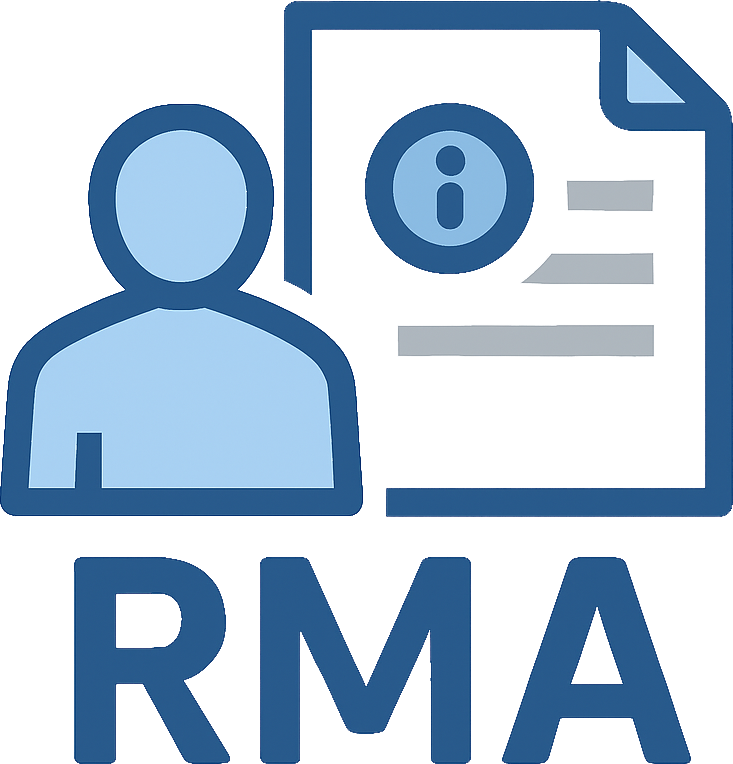Struggling with Copper in Your NC Marina's NCG190000 Permit Samples?
If you operate a marina, boatyard, or boat repair facility in North Carolina, and you’re covered by the NCG19 stormwater general permit, you already know it can feel like a bit of a hassle... and that's before your monitoring results start to sink.
Many marinas find themselves caught in a frustrating cycle of copper exceedances and unclear next steps. Maybe you’ve received poor stormwater sampling results and now you’re navigating Tier 1, Tier 2, or even Tier 3 status under the permit. If that’s where you are, first things first: you’re not alone, and there are clear steps forward.
We get a lot of questions from marine industry operators across the state about what the NCG19 permit really requires, what to do when benchmark levels are exceeded, and how to move out of a tiered response status. That’s why we created this quick guide - to give you a clear overview of:
- What stormwater monitoring and benchmarks look like under NCG19
- Why copper is such a common problem for marinas
- What Tier 1, 2, and 3 statuses actually mean
- Strategies you can use to reduce metals in your stormwater discharge and regain compliance
By the time you finish reading, you’ll have a better understanding of what the NCG19 permit expects, what common challenges the marina industry is facing (especially around trace metals), and most importantly - what you can do next. And if it's all too much for you, we can help you handle this - just reach out here. Let’s get into it.
Table of Contents
Why Copper Is a Persistent Problem for Marinas Under NCG19
North Carolina’s marinas are more than just places to park boats. They’re community hubs fueling tourism, recreation, and small business growth along the state’s coast and inland waterways. But with that essential role comes an equally critical responsibility: managing stormwater runoff in a way that protects our waters from pollution.
To meet this responsibility, marinas that conduct industrial activities - like boat washing, maintenance, fueling, or painting - fall under the North Carolina Department of Environmental Quality’s (NCDEQ's) stormwater permitting program. Most are regulated by the General NPDES Stormwater Permit NCG190000, commonly known as NCG19.
This permit is part of the federal Clean Water Act framework that requires industrial facilities to monitor their stormwater for pollutants and take action when those pollutants exceed acceptable levels. Marinas are included in this category due to their potential to release harmful substances like oil, grease, sediment, and one particularly tricky pollutant: dissolved copper.

So, why is copper such a big deal for marinas?
The answer is that copper frankly comes from all kinds of places, but one of the most common culprits lies in anti-fouling paints (or "bottom paints"). These paints contain copper because it's highly effective at preventing barnacle and algae buildup on boat hulls. Unfortunately, that same copper becomes problematic on land.
When boats are pressure washed, sanded, or repainted, tiny particles of copper can end up in the runoff. That runoff often flows across pavement, into storm drains, and eventually out to nearby surface waters. Even airborne particles can deposit trace metals over time, adding to the problem.
Under NCG19, the benchmark for dissolved copper is set at:
- 6 µg/L (micrograms per liter) for discharges to saltwater
- 10 µg/L (micrograms per liter) for discharges to freshwater
That’s 6 parts per billion - equivalent to just a few drops of ink in a giant swimming pool! It's lower than the U.S. drinking water standard for copper and, in some cases, even lower than natural background levels. So yeah, it's an extremely short leash!
What does this mean in practice? Even marinas that have invested in good stormwater controls and housekeeping can regularly exceed copper benchmarks. And unfortunately, under NCG19, those exceedances automatically trigger the tiered response requirements... and that’s where the real challenge begins.

Understanding the Tiered Response Framework of NCG19
This brings us to one of the most challenging components of the NCG19 permit: the tiered response framework.
When a marina exceeds a benchmark (often for copper!) it doesn't just result in a warning or a note in the file. It initiates a structured, escalating process called North Carolina's Tiered Response System. While its intent is to encourage better stormwater management over time, for many marinas (especially smaller or mid-sized ones) it can quickly become a regulatory and financial burden.
Here’s how it works:
- "Tier 0": Good news - you start here. When you’re first covered under NCG19, you’re not in any tier. You're simply expected to monitor and report as required.
- Tier 1: Triggered by a single exceedance. One bad result in just one monitoring period, and you're officially in the club nobody wants to be in.
- Tier 2: If the exceedance continues in subsequent monitoring periods (2 bad results in a row), you move to Tier 2.
- Tier 3: This is the most intensive level. Continued bad samples while in Tier 2 mean you're headed for Tier 3. Which is definitely not a great place to be.
What’s important to understand is that you don’t enter a tier unless you exceed a benchmark. But because of how low the copper benchmark is, and how persistent trace metals can be in the marina environment, it’s unfortunately very common to find yourself climbing the tier ladder before you even realize it.
Breaking Down Tier 1, Tier 2, and Tier 3 Requirements
So what actually happens when your marina exceeds the copper benchmark? Let’s walk through each tier level and what it means for you.
Tier 1: First Exceedance – Time to Investigate
If your facility exceeds the dissolved copper benchmark for the first time in a monitoring period, you officially enter Tier 1 status.
Here’s what that means:
- You must notify your Regional DEQ Office about the exceedance and the start of your Tier 1 response.
- You must complete a comprehensive evaluation of the exceedance. This includes inspecting your existing stormwater controls, identifying likely sources of copper (e.g., paint chips, washwater, sanding dust), and reviewing the condition and performance of your best management practices (BMPs).
- This evaluation must be completed and documented within 30 days of receiving your lab results. You’re not required to submit it to DEQ yet, but it must be available for inspection during audits or site visits.
This is your early warning stage - a chance to make targeted improvements before the requirements increase.

Tier 2: Continued Exceedance – Formal Corrective Action Plan Required
If copper exceedances continue during the next monitoring period (usually over two consecutive semi-annual sampling events), your marina moves into Tier 2.
Here’s what’s required:
- You must notify your Regional DEQ Office about the exceedance and the start of your Tier 2 response.
- You must develop a formal Corrective Action Plan (CAP) that outlines specific steps you’ll take to reduce copper levels in your stormwater. The CAP must be signed, certified, and submitted to the state. It should include timelines and details for upgrading BMPs, enhancing maintenance, introducing source control measures, or possibly installing structural treatment systems.
- You may also be required to shift from quarterly to monthly monitoring. This is a significant increase in workload and cost for most marinas!
Tier 2 marks a turning point. This is where state regulators begin expecting measurable improvements, and your documentation, planning, and execution must be airtight.
Tier 3: Maximum Oversight – Engineered Solutions and Increased Scrutiny
If exceedances persist even after Tier 2 improvements, your facility may be bumped into Tier 3, the most stringent and demanding tier.
This stage typically includes:
- You must notify your Regional DEQ Office about the exceedance and the start of your Tier 3 response.
- An even more comprehensive Corrective Action Plan is required, often involving substantial investment in engineered solutions like filtration systems, detention basins, or specialized copper-removal technologies. This often means a third-party stormwater system evaluation, including detailed site analysis, pollutant source tracking, and assessment of your treatment capabilities.
- You'll most likely be required to monitor stormwater samples monthly, which again, can be a major operational burden.
- Closer regulatory oversight and potential additional enforcement actions are also very possible.
For many marinas, Tier 3 is a wake-up call. It’s also an opportunity to invest in long-term solutions and get support from environmental professionals who understand this process.

Can You Get Back to Quarterly Monitoring After a Tier 3 Escalation?
Yes, and if you’re facing monthly monitoring under NCG19, this should come as a huge relief.
According to the permit, if your facility has been bumped up to monthly monitoring (typically as part of a Tier 2 or Tier 3 response), you can revert back to quarterly monitoring. How? By achieving three consecutive stormwater samples below the applicable benchmark.
That means three passing samples in a row, and you’re eligible to drop down a tier and resume the less frequent sampling schedule. It's a path back to normal, but it does take intentional effort and a solid stormwater strategy to get there.
Proven Best Management Practices for Managing Copper Runoff at Marinas
So what can marinas actually do to reduce copper in their stormwater discharges, especially with such an unforgiving benchmark? Below are several Best Management Practices (BMPs) we recommend based on what’s worked for marina clients across North Carolina:
- Routine Pavement Sweeping: Regular sweeping around maintenance and repair areas helps reduce the amount of copper-laden dust and debris that might otherwise enter your drains.
- Drop Cloths and Tarps: One of the most effective and low-cost BMPs. Place them beneath boats during sanding, scraping, or painting to catch particles and liquids before they reach the ground. Clean and replace regularly.
- Covered or Sheltered Work Areas: If possible, conduct sanding and painting under roofed structures or temporary shelters to minimize rain contact. Portable containment units are a great alternative for smaller operations.
- Filtration Socks: These go around storm drains or in areas where water flows. They’re excellent at capturing sediment - and some are specially engineered to filter out trace metals like copper. If you’re seeing metal exceedances, these should be on your shortlist.
- Spill Prevention and Proper Storage: Store paints and chemicals in covered, clearly labeled containers. Train your team in spill response procedures and maintain an up-to-date spill prevention plan.
- Advanced Filtration Systems: For facilities nearing or already in Tier 2 or 3, engineered stormwater filtration systems can make a big difference. Think activated carbon filters, proprietary cartridge systems, vegetated swales, or biofilters. These come with cost and maintenance considerations, but the copper-reduction potential is real.
- Staff Training: This is often the most overlooked - but most important - step. Everyone on your team needs to understand stormwater responsibilities, how to take samples correctly, and how to follow BMPs. A well-trained team can be the difference between staying in Tier 1 and escalating to Tier 3. Check out our online NCG19 training here - made specifically for marinas in North Carolina!

Final Thoughts: Navigating NCG19 Doesn’t Have to Be a Solo Journey
Here’s the truth: meeting the copper benchmark under North Carolina’s NCG19 permit is no small feat. The limits are low. The escalation process is strict. And the cost, both financial and operational, of staying in Tier 2 or Tier 3 can be steep. But you’re not alone. Marinas across the U.S. are grappling with the same challenges, and many have found ways to adapt, respond, and succeed.
With a clear understanding of your permit obligations, a smart BMP strategy, and a proactive approach to site management, you can reduce your risk and protect the waterways that make your business possible.
At RMA, we’re committed to helping marina operators like you navigate every stage of that journey. Whether you need help evaluating your monitoring results, developing a corrective action plan, training your team, or figuring out BMPs, we’ve got your back.
We’re ready to help your marina stay compliant, reduce liability, and keep doing what you do best: serving your community on the water. Reach out here, and let's your marina back to smooth sailing.

